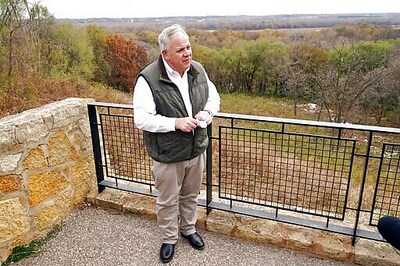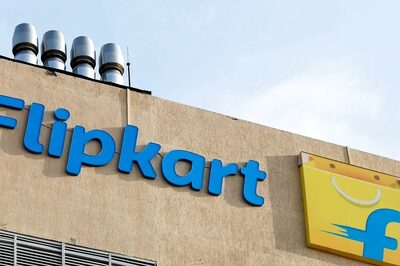
views
Once a prosperous and progressive state even during the toughest times, Punjab today is struggling with the colossal problem of unemployment due to distressed farming and a skewed industrial base.
In the age group of 20-30 years, the unemployment rate in the state is 28 per cent as estimated by the Centre for Monitoring Indian Economy (CMIE).
Last year, about 2.33 lakh youth queued up for 1,152 posts of Patwaris and 7,000 applications were received for 27 posts of Class D, painting a grim picture of unemployment in Punjab, which is one of the major root causes of drug addiction and crime among youth.
Punjab bore the brunt of the Partition of India in 1947 and 13 years of militancy in the mid-80s to mid-90s. However, within a few years of this shattering experience, it was our entrepreneurial spirit that ensured Punjab was not only able to rehabilitate its economy but also emerged as the richest state in India.
In 1984, the per capita income in Punjab was Rs 3,560 as compared with the national average of Rs 2,288. Punjab ranked first in GDP per capita among Indian states in 1981 and fourth in 2001, now ranking 19th, only due to uncontrolled unemployment amid a rising population.
Agriculture has its limits
The agrarian state of Punjab has reached its saturation point. We contribute 35-45 per cent wheat and 25-30 per cent of rice in the Central pool but the employment elasticity is very limited. A sizeable section of the agricultural population is being rendered idle due to constant decline in the size of landholdings along with rapid growth of population.
In the mid-1960s, Punjab led the ‘Green Revolution’. However, the positive effect of this lasted only for a short while. From 1971 to 1986, Punjab’s agriculture logged a 5 per cent annual average growth while Indian agriculture grew by 2.20 per cent. In the subsequent two decades, Punjab’s agriculture grew by 2.5 per cent, lower than the national average of 3 per cent. The employment share of Punjab’s agriculture sector has declined from 50 per cent in 2004–05 to around 26 per cent currently against the national average of 45.6 per cent.
Neglected industrial and tertiary sectors
Punjab can’t grow more fields but it could create more jobs and output outside the agriculture sector by promoting industrial and tertiary sectors. The neglected industrial sector has unlimited potential. Currently, its average annual growth is 5 per cent, makes 24 per cent contribution to state GDP and has 32 per cent share in employment.
The state is known to take pride in its industries too, especially textiles, hosiery, bicycles, tractors and agri-machinery, automobile components, sports goods manufacturing and leather. Punjab has emerged as the home of the largest bicycle manufacturers and accounts for 75 per cent of India’s bicycle production. The largest manufacturer of tractors, agricultural machinery, hand tools and machine tools in India is in Punjab.
Potential in existing industry
Instead of running after new investment MOUs with outsiders, we have so much potential in our existing industrial sector. There are reasons. Defying the wounds of militancy, Punjab recovered fast. Its industry grew at an average of 21.75 per cent in 1980-85 while the national growth was 8 per cent. Even during the peak of militancy, industrial growth rate was 10.75 per cent in 1986-91 and Punjab was placed fifth among states.
Now, Punjab ranks 12th among 16 states. However, after the Indian economy was liberalised in 1991, the growth of our industry stalled at only 1.87 per cent (1992-97). This slowed down further to 0.98 per cent (1998-2000), as per the report of the Finance Committee. Between 2001 and 2021, the industry witnessed only 5 per cent annual average growth below the national average growth of 6.5 per cent.
The industrial sector in Punjab is dominated by SMEs (99.7 per cent) and needs a level playing field to compete with the industrial clusters of coastal line states. The rail freight from Ludhiana dry ports to Kandla (Gujarat) and other seaports is to be minimised. Chief Minister Bhagwant Maan recently announced in the Vision Punjab conclave of ASSOCHAM that “Punjab will be the first state in the country to own wagons (Punjab on wheels) in PPP mode, which will be helpful to compensate overburdened freight”.
Way Forward
• Employment generation in the industrial and tertiary sector will not only revive the state’s distressed economy, but youth could also get rid of drug menace and crime.
• In the coming new industrial policy (2022-2027), need to focus on existing industries and in particular key sectors that employ around 70 per cent of the industrial workforce such as textile, agri-machinery, tractors and auto components, sports and engineering goods.
• The existing Industrial and Business Development Policy should be reframed and redefined as the ‘Punjab Employment and Entrepreneurs Policy’ (PEEP) aimed at providing livelihood opportunities to lakhs of unemployed.
Read all the Latest Opinion News and Breaking News here



















Comments
0 comment